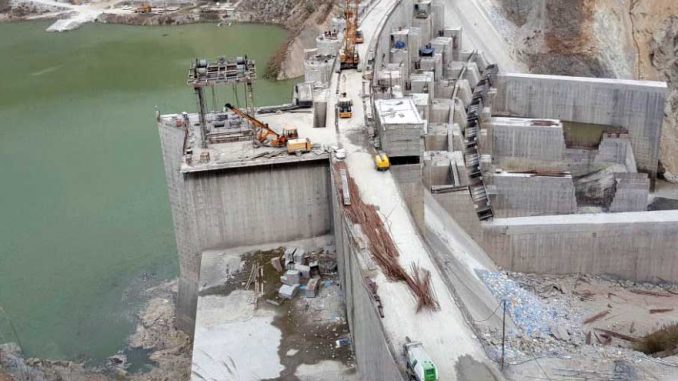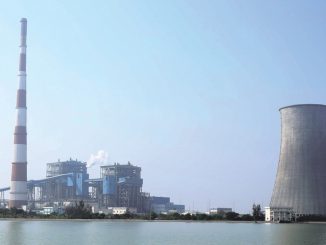
The pace of hydropower capacity addition in recent years has been rather slow, particularly in the north-eastern region, which has a significant untapped hydro potential. Central sector PSU North Eastern Electric Power Corporation Limited (NEEPCO), which has been playing a strategic role in meeting 40 per cent of the region’s power demand through thermal and hydro projects, recently marked an important milestone. After a long gap, the genco commissioned two hydropower projects in the region – the 60 MW Tuirial hydroelectric power project (HEP) in Mizoram and the 110 MW Pare hydropower project in Arunachal Pradesh.
With this, NEEPCO has scaled up its installed generation capacity to 1,457 MW, which includes hydro, thermal and renewable energy sources. The genco also has significant upcoming project capacity. About 600 MW of hydro capacity is under construction, which is expected to be commissioned in the current fiscal year, while a number of projects are at various stages of approvals and planning. NEEPCO is also looking to expand its presence in the renewable energy segment and proposes to invest in solar power in Odisha.
Current capacity and performance
NEEPCO’s current installed capacity comes from five HEPs with a capacity of 925 MW, three gas-based projects aggregating 527 MW and two solar projects of 5.002 MW.
The HEPs are the 405 MW Ranganadi HEP (Arunachal Pradesh), which is also the Northeast’s largest HEP; the 275 MW Kopili HEP (Assam); the 75 MW Doyang HEP (Nagaland); the recently commissioned 60 MW Tuirial HEP (Mizoram); and the 110 MW Pare HEP (Arunachal Pradesh).
Units I and II of the Tuirial HEP were commissioned in August 2017 and November 2017 respectively. The project faced several challenges during construction. After the completion of about 30 per cent of the project, work had to be suspended from June 2004 onwards due to local protests. Following sustained efforts by NEEPCO and the active support of the Ministry of Power, the Ministry of Development of North East Region, and the Mizoram government, the stalled works were resumed in January 2011. The Tuirial HEP is the biggest power project in Mizoram and the entire energy generated by it will be fed to the home state. Meanwhile, the Pare project was commissioned in May 2018. Earlier, in December 2017, NEEPCO had signed an agreement to secure a Euro 20 million loan from German Bank KfW under the Indo-German Bilateral Development Cooperation for the completion of the Pare HEP. This is in addition to the loan agreement of Euro 80 million in 2008.
Generation from hydro plants, including the recently inaugurated Tuirial HEP, was 3,202 MUs in 2017-18, about 23 per cent higher than the 2,985 MUs generated during 2016-17.
NEEPCO’s thermal portfolio comprises the 291 MW Kathalguri combined cycle power plant (CCPP) in Assam, the 135 MW Agartala gas turbine (GT) CCPP (which includes the 51 MW Agartala GT combined cycle extension project) and the 101 MW Monarchak CCPP in Tripura. The PLFs of these projects in 2017-18 stood at 7.62 per cent, 51.78 per cent and 76.32 per cent respectively. In 2017-18, NEEPCO generated 2,957 MUs of thermal energy, about 18.85 per cent higher than the 2,488 MUs generated in 2016-17.
In the renewables segment, the company operates a 5 MW solar PV plant located on the premises of the Monarchak CCPP; it is the largest grid-interactive solar plant in the north-eastern region. The implementation was carried out by Bharat Heavy Electricals Limited at an estimated cost of Rs 495.2 million. The plant has been operating commercially since February 2015. The plant generated 6.71 MUs during 2017-18 as against 7 MUs in the previous year. Besides, a 2 kW solar tracker project has been commissioned at the Kopili HEP.
Financial performance
Financially, the genco is on a strong footing. During the five-year period 2013-14 to 2017-18, the company’s total income increased at a compound annual growth rate (CAGR) of 17.41 per cent from Rs 14,177.2 million in 2013-14 to Rs 16,646.67 million in 2017-18. NEEPCO’s profit after tax (PAT) increased from Rs 2,351.2 million to Rs 2,931.7 million during the same period, indicating a CAGR of 24.68 per cent.
In terms of year-on-year performance, NEEPCO’s total income increased by about 16.42 per cent in 2017-18 from Rs 14,297.68 million in 2016-17. The company’s PAT also increased significantly to Rs 2,931.73 million from Rs 2,259.76 million during the same period, marking a growth of about 29.73 per cent.
In September 2018, NEEPCO issued bonds for Rs 3 billion with a tenor of seven years and a yield of 9.25 per cent. The bonds were undersubscribed and the company received bids for only Rs 130 million. Earlier, the company raised Rs 3 billion through a 10-year PSU bond issue with a coupon of 8.75 per cent in March 2018, and Rs 5 billion through an eight-year bond issuance with a coupon of 7.68 per cent in November 2017.
 Upcoming capacity
Upcoming capacity
NEEPCO is currently implementing the 600 MW Kameng project in Arunachal Pradesh, which is scheduled for commissioning in 2018-19. It was originally targeted to be commissioned in 2009-10. Its latest cost, as per Central Electricity Authority (CEA) data, is Rs 61.79 billion, compared to the original cost of Rs 24.96 billion.
Apart from this project, NEEPCO has 295 MW of hydro capacity in the pipeline. This comprises the 85 MW Wah Umiam Stage III HEP in Meghalaya, which is under survey and investigation. The environment ministry has recommended environmental clearance for the project. NEEPCO has also signed a memorandum of agreement with the Mizoram government for executing the 210 MW Tuivai HEP. The project’s cost and tariffs are currently being examined.
The company has about 4,200 MW of planned hydro capacity through joint ventures (JVs). This includes the 3,750 MW Siang Upper Stage II HEP, the 330 MW Kurung HEP and the 120 MW Dibbin HEP, all in Arunachal Pradesh. The Siang HEP is a JV between NEEPCO, NHPC and the state government, and is expected to be completed in eight years. The Dibbin HEP is being developed by NEEPCO and KSK Energy Ventures Limited, and is expected to be completed in four years. The Kurung HEP is a JV between NEEPCO and the Arunachal Pradesh government, and is expected to be completed in about six and a half years.
In the thermal segment, NEEPCO has one project in the pipeline – the 500 MW Garo Hills thermal power project (TPP) in Meghalaya. Long-term coal linkage for the project is being explored with the state government.
In the renewable energy segment, the company is proposing to build a 200 MW solar power plant in Dhenkanal in Odisha. The project is scheduled to be commissioned in December 2019, and has a proposed investment of Rs 9,448.5 million. In-principle approval for the initiation of project-related works is currently awaited. NEEPCO’s proposal was cleared by Odisha’s State Level Single Window Clearance Authority in July 2017. The project has received in-principle evacuation clearance from Odisha Power Transmission Corporation Limited. Meanwhile, NEEPCO’s 40 per cent investment in a JV with Waaneep Solar Private Limited, which had plans to set up a 50 MW solar power plant in Madhya Pradesh, was sold off to its JV partner, Waaree Energies Limited last year.
 Conclusion
Conclusion
The north-eastern region’s geographically difficult terrain, hostile climatic conditions and inaccessibility in reaching potential locations to harness power have posed challenges in setting up and efficiently operating power plants. This has also affected transmission and distribution in this region. Execution hurdles for NEEPCO remain high, impacting commissioning schedules and the costs of upcoming projects. That said, NEEPCO’s healthy profit margins, strong generation performance and steady returns from existing and newly commissioned projects are expected to support the company’s growth plans in the long term.



